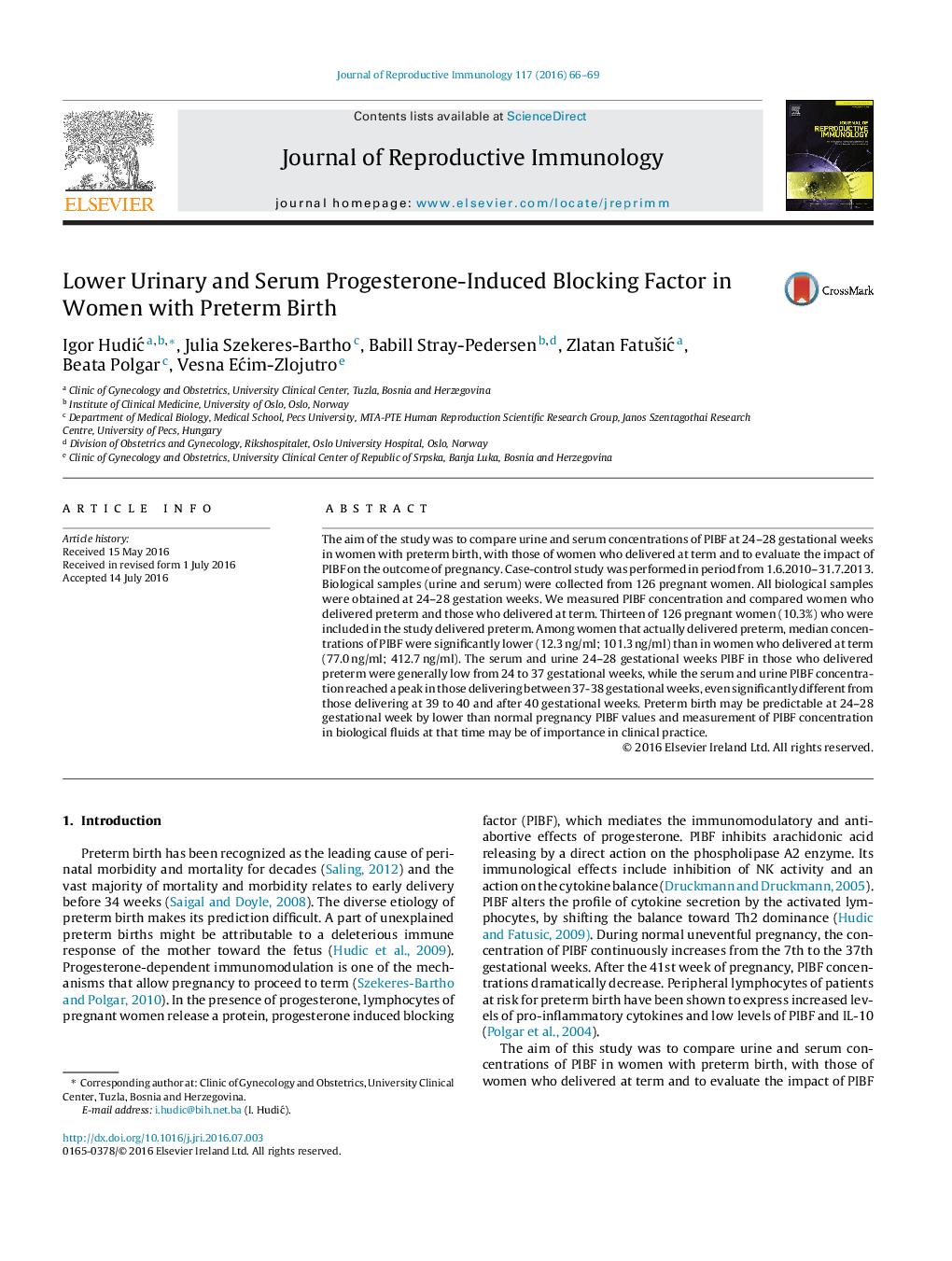| Article ID | Journal | Published Year | Pages | File Type |
|---|---|---|---|---|
| 6187810 | Journal of Reproductive Immunology | 2016 | 4 Pages |
â¢We analyze the maternal urine and serum concentration of progesterone-induced blocking factor.â¢The study was conducted on a sample of 126 women.â¢Preterm birth may be predictable at 24-28 gestational week by lower than normal pregnancy PIBF values.â¢Measurement of PIBF concentration in biological fluids at that time may be of importance in clinical practice.
The aim of the study was to compare urine and serum concentrations of PIBF at 24-28 gestational weeks in women with preterm birth, with those of women who delivered at term and to evaluate the impact of PIBF on the outcome of pregnancy. Case-control study was performed in period from 1.6.2010-31.7.2013. Biological samples (urine and serum) were collected from 126 pregnant women. All biological samples were obtained at 24-28 gestation weeks. We measured PIBF concentration and compared women who delivered preterm and those who delivered at term. Thirteen of 126 pregnant women (10.3%) who were included in the study delivered preterm. Among women that actually delivered preterm, median concentrations of PIBF were significantly lower (12.3Â ng/ml; 101.3Â ng/ml) than in women who delivered at term (77.0Â ng/ml; 412.7Â ng/ml). The serum and urine 24-28 gestational weeks PIBF in those who delivered preterm were generally low from 24 to 37 gestational weeks, while the serum and urine PIBF concentration reached a peak in those delivering between 37-38 gestational weeks, even significantly different from those delivering at 39 to 40 and after 40 gestational weeks. Preterm birth may be predictable at 24-28 gestational week by lower than normal pregnancy PIBF values and measurement of PIBF concentration in biological fluids at that time may be of importance in clinical practice.
